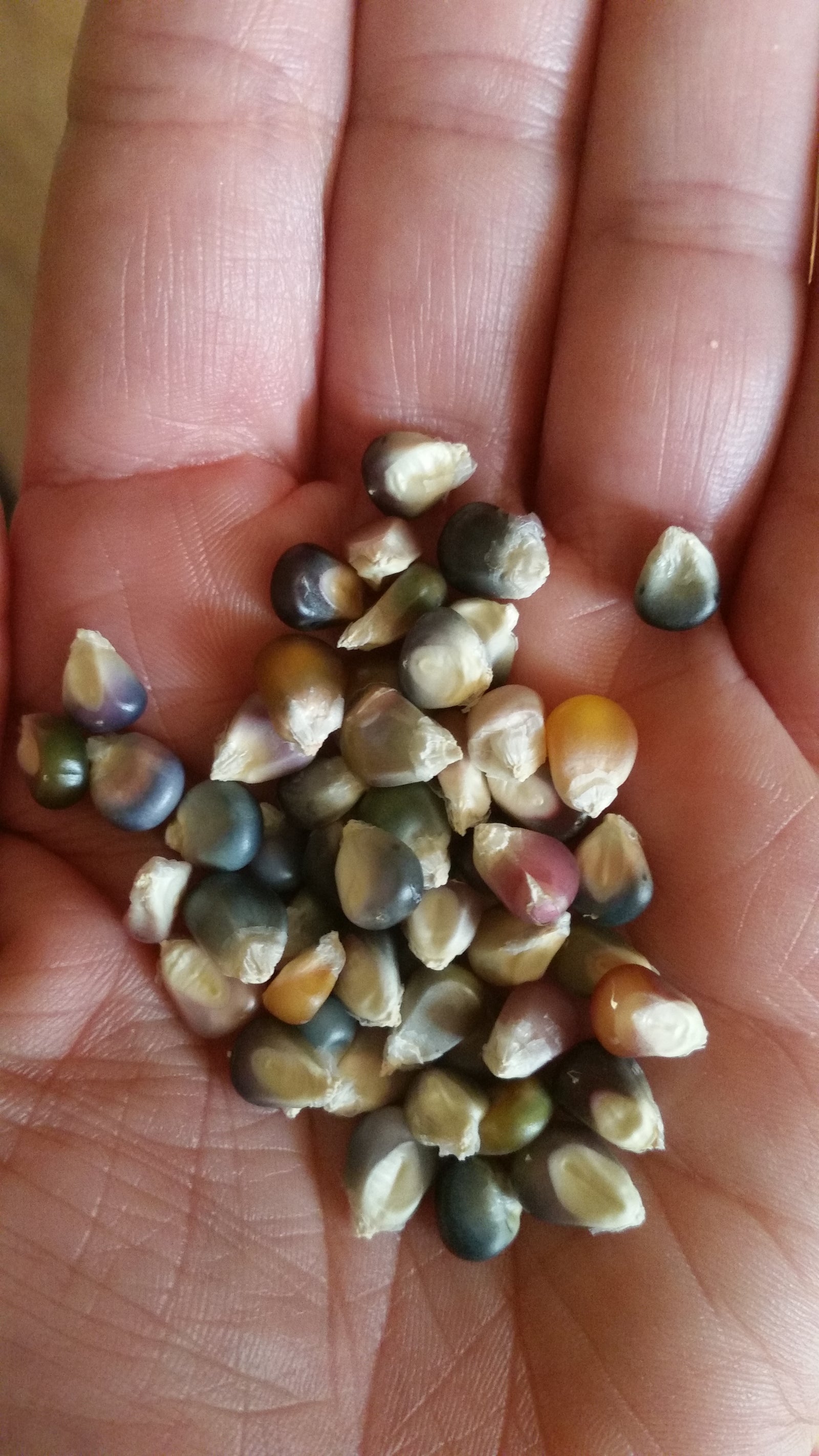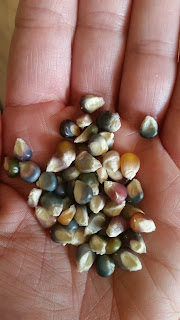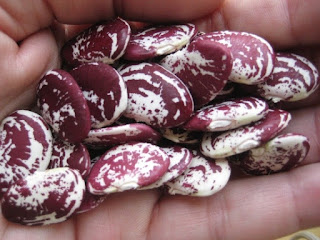TIP: Stocking up on seeds for SHTF only works if you're actively growing and rotating seeds!
Please don't fall for the "lasts indefinitely" claim from most survival seed companies. Seeds most definitely have a shelf life (even in mylar bags). No one grows a perfect garden every year so if you're planning on growing, PRACTICE is essential.
We have been asked many time if we plan on offering a "survival seed pack" but it's just not something we want to encourage. We do however offer several Seed Combo packs as well as a Back to Basics Homestead pack.
There are many reason to be prepared and not all of them are a complete collapse of our system. Sickness, loss of a job or a reduction in wages are just a few very personal reasons to prepare for the unexpected.
Being prepared doesn't necessarily need to be for TEOTWAWKI (the end of the world as we know it).
As we mentioned in Food Security & Insecurities in the US
Reasons for Food Insecurities include
Job Loss
Sickness
Rising food costs
Crop failure due to Weather or Water Shortage
Farm labor shortage
Interruptions in transportation of food
Civil unrest
Natural Disasters, as we've seen in recent months, are another VERY important reasons to be prepared. Due to our aging infrastructure and roadways, emergencies can stall the delivery of goods, leaving a community without food for a given period of time. While the recent hurricanes and wildfires have wiped out many people's gardens, their gardening experience cannot be taken away.
Getting Started
-Find out what grows best in your area and when to plant for your region.
Our Planting Guide for the US is a great resource
-How much space do you have for growing and is it adequate for feeding your group
*I'm working on a plant spacing article so we'll update this article soon*
-How many plants and varieties do you need to sustain yourself and/or your group
-If you're newer to Growing, it might be a good idea to start with easier varieties. Stock up on all of the food varieties that you eat but start planting the easy ones.
-Timing is everything! If you're in a very HOT climate, usually summer is not the time to plant. If you're in a cool or cold climate, it is best to plant indoors to get a jump on planting season and/or provide a greenhouse to extend your growing season.
Our Planting Guide for the US is a great resource
-Learn to Save Seeds!
FIRST and most important: Seed Saving from your own harvest is preferred. Store bought produce can be GMO or even hybrid. Even organic store bought can be hybrid. Hybrid seeds can be sterile and will not produce true offspring from saved seeds.
Open-pollinated, heirloom seeds will grow seeds that can be saved and re-planted year after year.
Read Seed Saving Part 1
-Learn to Save Seeds!
FIRST and most important: Seed Saving from your own harvest is preferred. Store bought produce can be GMO or even hybrid. Even organic store bought can be hybrid. Hybrid seeds can be sterile and will not produce true offspring from saved seeds.
Open-pollinated, heirloom seeds will grow seeds that can be saved and re-planted year after year.
Read Seed Saving Part 1
Don't Wait until it's Too Late
As we mentioned above,
"No one grows a perfect garden every year so if you're planning on growing, PRACTICE is essential."
Learn to grow the foods that you eat regularly. Canning and preserving those foods would be the next step in being more self-reliant. You'll find that growing food takes a bit of patience and knowledge of soil, sun and water. If you have clay soil you mid need to amend with compost. If you have rocky soil you may need to grow in raised beds. These are things you'll learn as you grow.
We offer 3 new videos about using Compost and Manure to amend your soil and these resources are FREE!
SEEDS!
EXTRAS
Beans - Easy to grow and preserve. Beans are very high in fiber, calcium, Vitamins A, C, and K
Spinach - Cold hardy and prolific. Many call this a superfood based upon its large array of vitamins such as Vitamin A, C, iron, thiamine, thiamine, and folic acid.
Potassium
Potassium
Carrots - Another hardy crop that requires very little space. This root crop is a good source of carbohydrates, vitamin A, vitamin C
Squash - Both squash and pumpkin are prolific producers. Both store well, especially winter squash. Seeds can be saved and/or roasted and consumed. Squash has lots of carbohydrates and a great nutrient list, including Vitamins A and C, as well as magnesium and potassium.
Allium varieties - This includes Onions, shallots, Leeks and garlic. A good source of dietary fiber, Vitamin B6, Vitamin C, folate and potassium.
Beets - Easy to grow and multi-functional. Both roots and greens are edible making beets a dual purpose crop.
Tomatoes - If you can keep your pest issues to a minimum, tomatoes can produce an abundance of food from a relatively small space. Tomatoes are a good source of Vitamin A, C, K, E, Potassium, thiamine, and Niacin
Broccoli - Another cool weather crop. Broccoli is a good source of protein, Vitamins A and K, and carbohydrates
Peppers - From a medicinal view, peppers such as cayenne are essential for natural remedies. Peppers are high in vitamin A and C
Eggplant - Not something most people would think to grow but still an important one. Eggplant is relatively easy to grow and can grow for 3 or more years. Bonus, it's pretty easy to save seeds from Eggplant
Asparagus - An essential perennial. Depending on your region, established Asparagus plants can continue to produce for 30 years (some report for longer)
Amaranth - Another dual purpose plant. Amaranth is naturally drought tolerant. Seeds from the amaranth can be used as a grain (cook just as you would quinoa). Leaves can be picked while young and tender and eaten raw or sauteed as you would spinach.
Radish - If you need a FAST maturing crop, radish is one of the best. From seed to harvest, radish is mature in as few as 25 days. Seeds are easy to save from crops and just as easy to stockpile.
Corn - I know I mention grain below but Corn deserves a specific mention. While corn might not be the easiest crop to grow, it has many uses. Most people automatically think of Sweet Corn. However, Dent Corn & Field Corn are important. Both can be dried and fed to livestock. It can also be dried and ground into cornmeal.
Radish - If you need a FAST maturing crop, radish is one of the best. From seed to harvest, radish is mature in as few as 25 days. Seeds are easy to save from crops and just as easy to stockpile.
Corn - I know I mention grain below but Corn deserves a specific mention. While corn might not be the easiest crop to grow, it has many uses. Most people automatically think of Sweet Corn. However, Dent Corn & Field Corn are important. Both can be dried and fed to livestock. It can also be dried and ground into cornmeal.
Grains - If you have livestock on your homestead, grains can help feed them. Grains are a good source of carbohydrates, are high in dietary fiber and manganese
EXTRAS
HERBS: Natural pest control can be obtained thru companion planting with herbs. If you're planning on making your own herbal remedies, medicinal herbs are a must.
Read COMPANION PLANTING
FLOWERS: Do not underestimate flower power! We use many flowers planted throughout our garden for companion planting and to attract bees for pollination. Most common flowers we use are Borage, PurpleConeflower, Marigolds, Nasturtium, Plains Coreopsis, Cornflower, Yarrow, SUNFLOWERS and Calendula
Potatoes - *Keep in mind, seed potatoes do not keep.* You must continually replentish your stock from your own crops (or Mary's Heirloom Seeds as long as we have internet). Potatoes are a staple diet of many of the world’s peoples, especially those in the west. The contain potassium, copper and B6 and are really good to ‘fill you up’ at mealtime. They are also usually pretty easy to grow, although some varieties are very disease prone.
Potatoes - *Keep in mind, seed potatoes do not keep.* You must continually replentish your stock from your own crops (or Mary's Heirloom Seeds as long as we have internet). Potatoes are a staple diet of many of the world’s peoples, especially those in the west. The contain potassium, copper and B6 and are really good to ‘fill you up’ at mealtime. They are also usually pretty easy to grow, although some varieties are very disease prone.
I hope you have enjoyed another educational article. if you have additional questions, please leave a comment below or send an email to mary@marysheirloomseeds.com
Sign up for our E-Newsletter





3 comments
So easy to start a seed vault out of a small plastic bin or box. We’ve found it to be easier though to store seeds by type, tomatoes with like, peppers with like, etc. Beans though, we’ve seperated into bush vs pole.
The biggest thing about survival prepping is to remember this one rule:
“Grow what you eat & eat what you grow”.
W/R
Kirk Smith
No homestead in the country with land and livestock. Just a suburban girl wanting to get started. Live in a developed neighborhood so I have a back yard and covered porch. Once I get the seeds started I’ll likely use raised beds.
Hopefully I can figure this out!
Thanks for all of your great articles and guidance.
New to planting and have much to learn. I believe your post of 15 Survival Seeds is a very good place to start the journey. Thank you